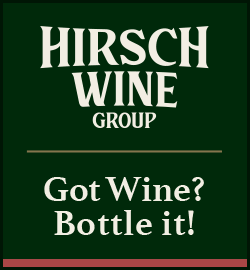Deadline 8 December 2023: Changes in labelling law
Beginning December 8th, 2023, a significant change awaits Australian winegrowers exporting to the European Union (EU). The EU is set to enforce a mandate requiring wine labels to feature nutritional and ingredient information, either directly or through QR codes known as e-labels. This transition poses several challenges and queries for Australian winegrowers. IMERO, in collaboration with EU wine law specialist Dr. Eichele, regularly addresses these concerns in webinars. Often, these sessions are conducted in association with esteemed European institutions, including the University for Gastronomic Science in Pollenzo, Italy. Below is a compilation of the most frequently raised questions.

The new EU labelling regulation
What is new?
Dr. Eichele: Previously, alcoholic beverages did not need ingredient and nutrition lists. From 8
December 2023, this exemption ends for wines, including semi-sparkling, sparkling, and aromatised
varieties. Labels must now feature ingredient and nutrition details or offer this data online via
QR codes.
Does this apply without exception?
Dr. Eichele: A single exception exists: wines “produced” before 8 December 2023. The exact definition of when a product is considered “produced” remains unclear. Vintages from 2022 and earlier are exempted, while the 2023 vintage’s status is still under review.
What does an ingredients list entail?
Dr. Eichele: An ingredients list begins with the label “Ingredients:” followed by each ingredient, listed in descending order starting with the most predominant. Minor ingredients (less than 2%) can be listed in any order. All additives must be mentioned, but processing aids are excluded. The distinctions between “additives” and “processing aids” are detailed in Annex I, Part A, Table II of the Oenological Regulation 2019/93. Within this reference, each wine treatment agent is categorized and denoted with a cross.
Is the ingredient list required on the label?
Dr. Eichele: Ingredients can be displayed on the label or provided online, accessible through a QR code on the label. It’s crucial that the list accessed via the QR code is free of any additional sales or promotional material. Gathering user data in this manner is also strictly prohibited.
Should the QR code be labelled as “ingredients”?
Dr. Eichele: While it’s not a legal requirement, several authorities advise labelling QR codes with “ingredients” for clarity.
What are the guidelines for nutrition declarations?
Dr. Eichele: Nutrition details typically list values for energy, fat, carbohydrates, sugar, protein, and salt per 100 ml. For wines, this mostly entails energy, carbohydrates, and sugars. If the nutrition declaration is provided online, the energy content must be displayed on the label, for instance, “E (100 ml): xx Kj/ yy kcal”
What are the regulations for online sales?
Dr. Eichele: Effective December 8, 2023, online wine sales must comply with the updated labelling regulations, necessitating the disclosure of ingredient and nutritional information. This information must be available across online commerce platforms and other distance selling avenues, like distributed price lists. While it’s not obligatory to include these details for every product (a requirement reserved for labels), including references or links in price lists that lead to a website with this information is permissible.

Digital solutions for the new label regulation
The e-label.io platform by IMERO offers the implementation as a QR code rather than printing the information explicitly on the label. What are the advantages?
Jonas Schenk: The most important advantages are space savings on the back label. With a QR-Code, winemakers will not have to redesign the whole back label with nutritional information and ingredients. Furthermore, using the e-label.io platform ensures, that the information is automatically translated into all 27 EU languages, meaning you can use one e-label for all EU countries. Thirdly, your local wine shops will need to include the information on their websites and pricelists as well. Using the e-label.io platform, winemakers can share the legally required information digitally with importers and shop-owners.
Do I need to delve into legal regulations regarding ingredient and nutritional value information?
Jonas Schenk: No. The e-label.io platform by IMERO is tailored to guide users in offering the mandatory details, sidestepping the need to understand the complexities of regulations. Only a standard wine lab report is necessary. The platform autonomously generates the nutrition table and has a pre-set ingredient list. Online legal elements are predefined.
Not all questions answered? Get ready for the next webinar!
Feel free to register for our free Webinar on Nov. 8th at 5 pm, exclusively being held for Australian Winemakers. Here you can find the registration link.
* The content in this post has been provided by a third-party contributor.





















